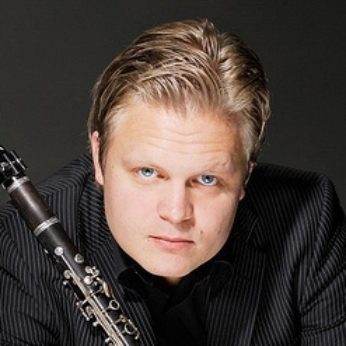Composer: Carl Maria von Weber (b. 1786 - d. 1826)
Performance date: 02/07/2012
Venue: Bantry Library
Composition Year: 1811-15
Duration: 00:25:45
Recording Engineer: Anton Timoney, RTÉ lyric fm
Instrumentation Category:Clarinet Quintet
Instrumentation Other: 2vn, va, vc, cl
Artists:
Christoffer Sundqvist -
[clarinet]
Signum Quartet (Kerstin Dill, Annette Walther [violins], Xandi van Dijk [viola], and Thomas Schmitz [cello]) -
[quartet]

Copyright © 2024 West Cork Music. All rights reserved.
Designed and developed by Matrix Internet